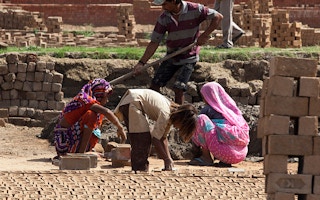India on Tuesday ratified two key global agreements on eradicating child slavery, committing the country to adopting international labour standards on the employment of minors and allowing it to be subjected to scrutiny by other nations.
India’s census found there were more than four million labourers aged between five and 14 in 2011 out of 168 million globally, but activists say millions more are at risk due to poverty.
Indian Minister of Labour Bandaru Dattatreya said in statement the ratification reaffirmed the country’s “commitment to a child labour free society.”
The International Labour Organization’s Convention on the Worst Forms of Child Labour and the Minimum Age Convention form the bedrock of global guidelines for countries to legislate nationally.
“
For years, India was saying we don’t have child slavery and was hesitant to admit the worst forms of child labour exist here, but now this government has agreed that this is a problem and that is why we are ratifying the conventions.
Kailash Satyarthi, child rights activist
Ratifying the conventions - which specify a minimum age of work and prohibit using minors in areas like armed conflict, prostitution or drug trafficking - means nations must adopt the standards and have their progress reviewed every four years.
Paradigm shift
Activist said successive governments had resisted ratification due to a general denial of the existence of child labour in India.
Nobel Laureate and child rights activist Kailash Satyarthi called the ratifications a paradigm shift.
“For years, India was saying we don’t have child slavery and was hesitant to admit the worst forms of child labour exist here, but now this government has agreed that this is a problem and that is why we are ratifying the conventions,” he said.
The ratifications would mean increased government spending on children, and also provide a strong legal tool for charities seeking to strengthen policy on child labour in the country’s courts, Satyarthi added.
India has one of largest populations of children in the world, with more than 40 percent of its 1.2 billion people below the age of 18, according to its 2011 census.
An economic boom in the last two decades has lifted millions out of poverty and progress has been made in curbing child labour with the introduction of social welfare schemes and laws to protect minors and ensure education.
Nonetheless, India is home to more than 30 per cent of the world’s 385 million most impoverished children, according to a 2016 World Bank and UNICEF report.
These children are easy prey for traffickers, who promise a better life but often end up selling them into forced labour or debt bondage.
More than half of India’s child workers are employed in agriculture and more than a quarter in manufacturing - embroidering clothes, weaving carpets or making match sticks.
Children also work in restaurants and hotels and as domestic workers. Many girls are sold to brothels for sexual slavery.
This story was published with permission from Thomson Reuters Foundation, the charitable arm of Thomson Reuters, that covers humanitarian news, women’s rights, trafficking, property rights, climate change and resilience. Visit http://news.trust.org










